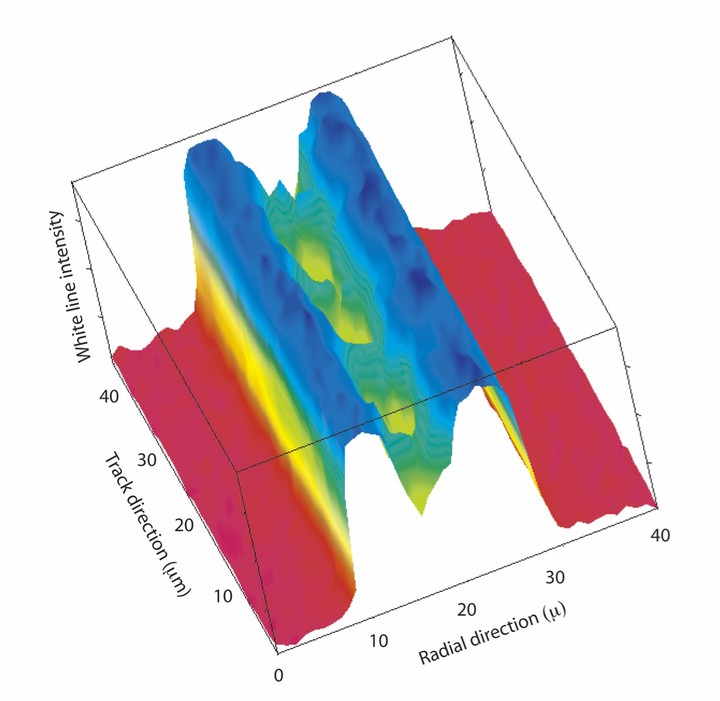 Real space XANES map of the surface of the experimental disk showing different regions
Real space XANES map of the surface of the experimental disk showing different regionsAbstract
Sub-nanosecond time-resolved x-ray absorption measurements have been used to probe dynamical changes in the local structure about Ge atoms in the phase-change alloy Ge₂Sb₂Te₅ during the optical recording (amorphization) process using an optical pump and x-ray probe technique to examine the reversible phase transition from the metastable crystalline phase to the amorphous phase. We provide unambiguous evidence that the amorphization process does not proceed via the molten state but is a photoassisted process. We argue that the transition to the amorphous phase is a consequence of photoassisted destabilization of the resonant bonding present in the crystalline phase. This observation challenges the currently existing paradigm of the phase-change process which implicitly assumes the existence of the molten phase as a prerequisite for the creation of the amorphous phase. Implications from this finding are discussed, including the possibility to use the polarization of light as an extra coordinate for data recording.